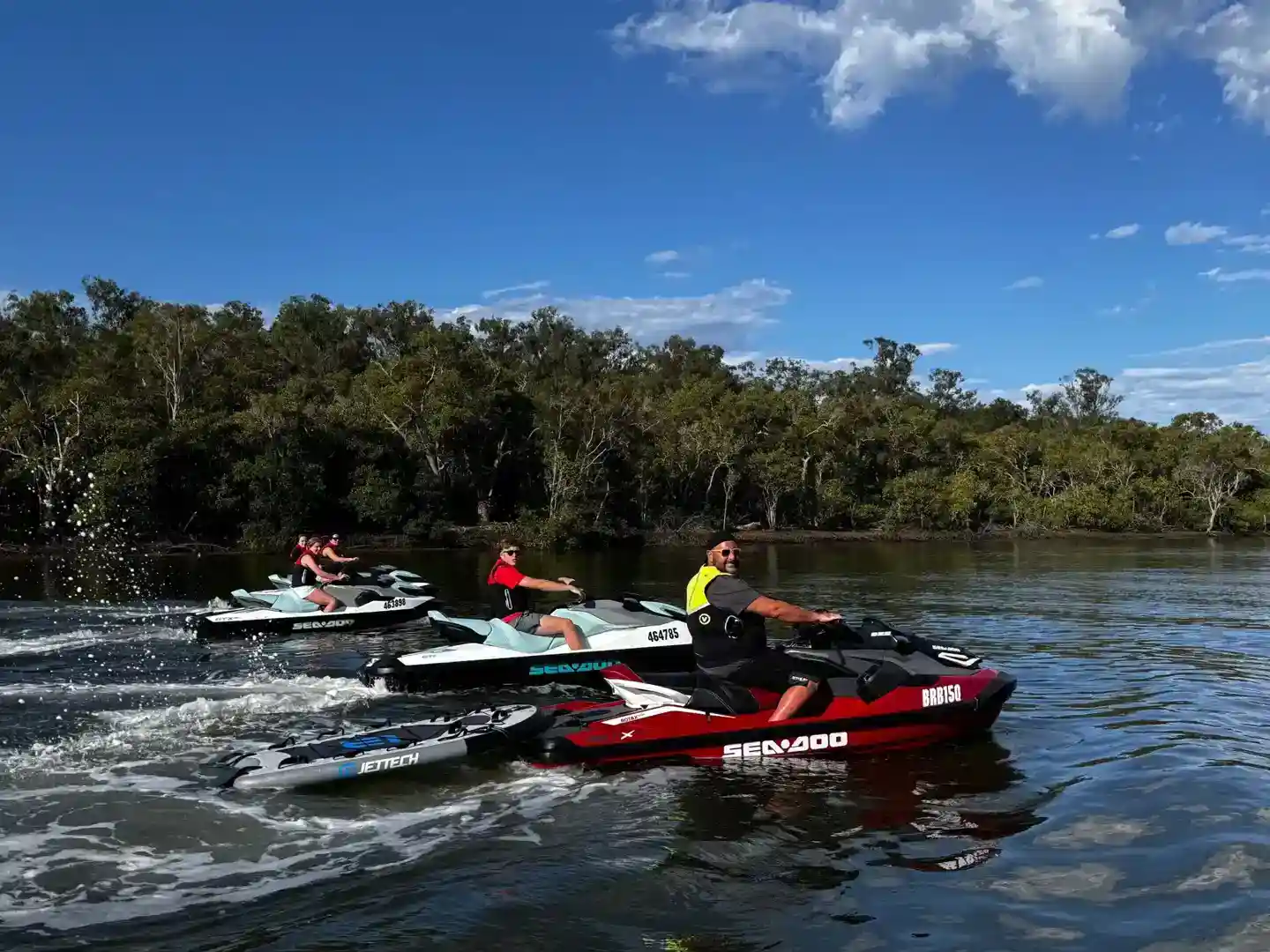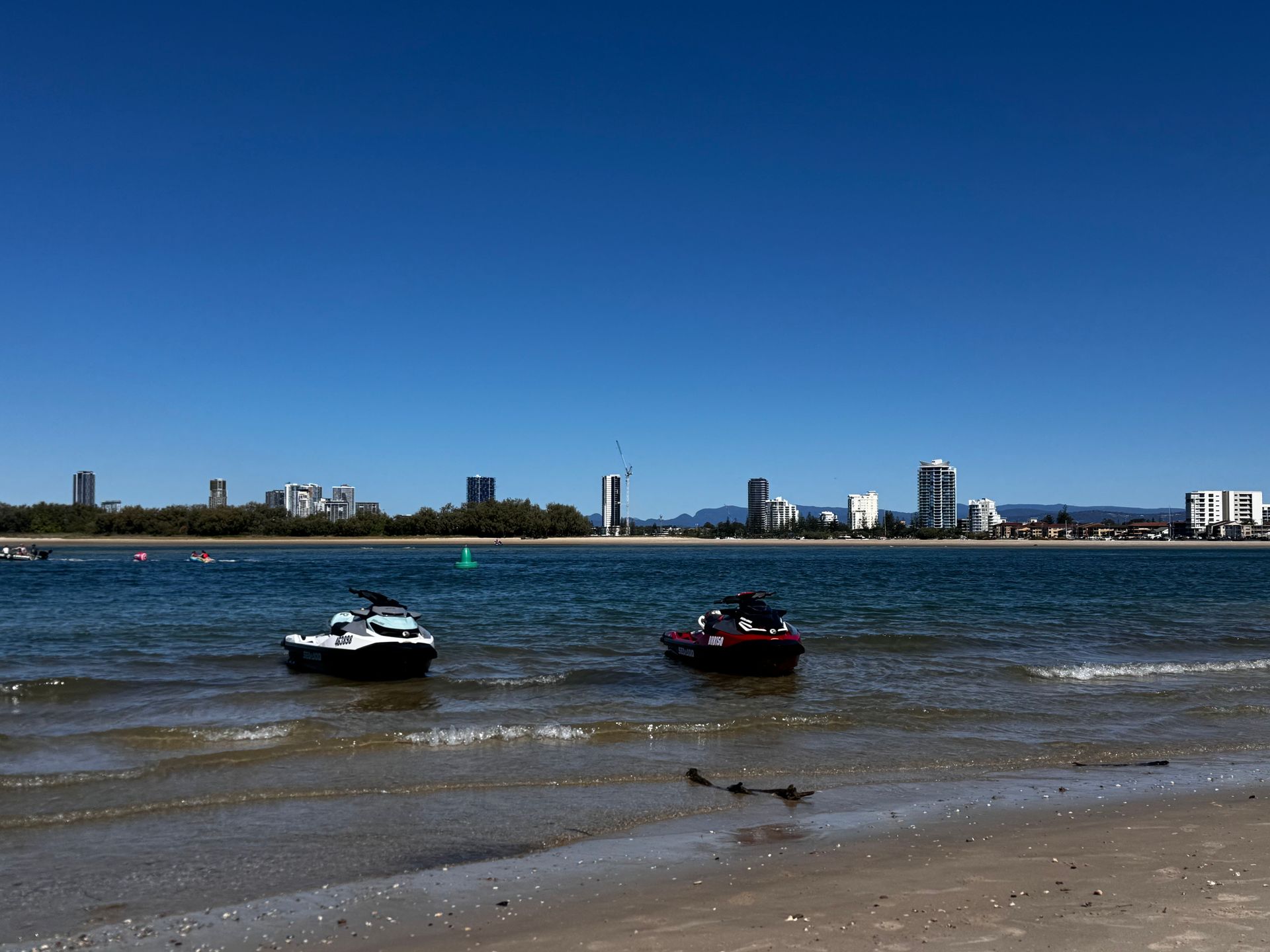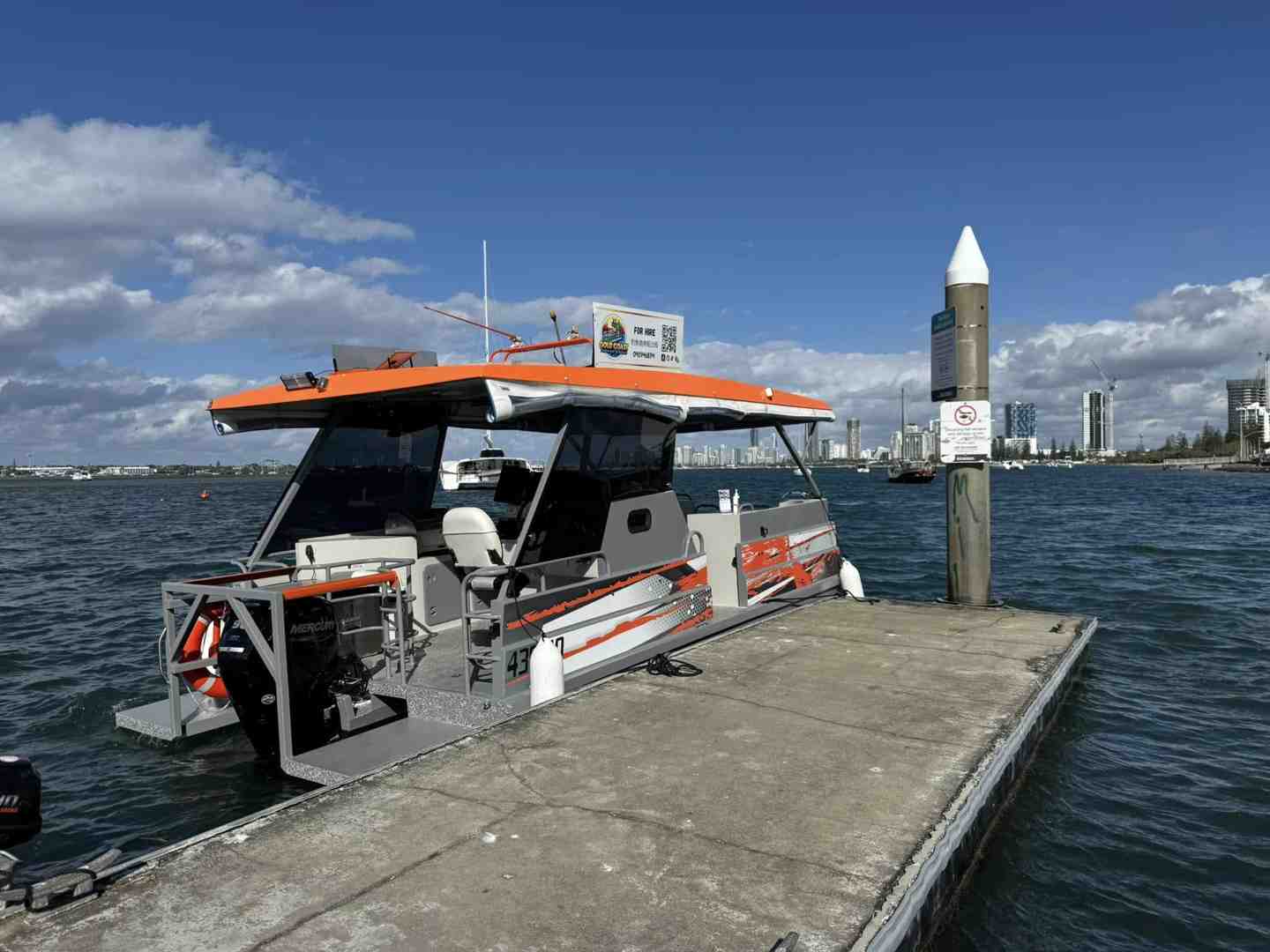Jet Ski Science: Understanding How These Watercraft Operate
The Science Behind Your Next Adventure

How does a jet ski work?
A jet ski uses a jet propulsion system. It pulls water in, an impeller accelerates it, and a nozzle shoots it out at high pressure. This creates thrust based on Newton's Third Law: the action of expelling water backward creates an equal and opposite reaction, propelling the craft forward.
Quick Answer:
- Water Intake: Water enters through a grate at the bottom.
- Impeller Action: A motorised fan accelerates the water.
- High-Pressure Exit: Water shoots out the back through a nozzle.
- Forward Motion: The expelled water pushes the craft forward.
- Steering Control: Handlebars pivot the nozzle to change direction.
Imagine zipping across the Gold Coast's pristine waters. Have you ever wondered about the engineering that makes it possible? Understanding the mechanics doesn't just satisfy curiosity; it helps you become a more confident and capable rider.
From powerful engines to ingenious impeller systems, every component works in harmony to turn raw power into pure speed. Knowing how your watercraft operates improves both safety and enjoyment on the water.
I'm Giovanni Randello, and I run GC Jet Ski on the Gold Coast. With years of experience racing, maintaining, and operating these machines, I have unique insights into what makes them tick. Let me guide you through the science that powers your next adventure.
Introduction to Jet Ski Mechanics
There's something magical about gliding across the Gold Coast's pristine waters. Behind every exhilarating ride lies incredible engineering. Understanding how a jet ski works doesn't just satisfy your curiosity; it makes you a safer, more confident rider on our beautiful waterways.
Knowing what makes these machines tick adds a new dimension to your experience. From powerful engines to ingenious systems that translate power into speed and control, every component is designed to give you the ride of your life.
What is a Personal Watercraft (PWC)?
Let's start with the basics. While many people say "jet ski," they're often using a brand name. Kawasaki owns the "Jet Ski" trademark, while Yamaha has "WaveRunner" and Sea-Doo is another popular brand. The correct term for all these machines is Personal Watercraft, or PWC .
So what makes a PWC different from a boat? The main difference is the propulsion. While most boats use an external propeller, PWCs use an internal jet drive system . This means there's no exposed propeller, making them much safer for families and anyone in the water nearby. You also sit on top of the craft, like a motorcycle, putting you right in the action.
These machines pack a serious punch. A large PWC might weigh around 450 kilograms yet can hit speeds of almost 110 kilometres per hour. That power-to-weight ratio makes every ride across the Broadwater an absolute thrill. If you're new to this, our Jet Ski for Beginners guide will help you get started safely.
The Core Components: Engine and Propulsion
At the heart of every PWC is a powerful engine. Most modern machines use four-stroke internal combustion engines , similar to a car's but designed for the marine environment. Think of a 1500cc engine, like one in a large motorcycle, tuned for water sports.
This engine powers the jet propulsion system. An intake grate on the underside draws water into the jet pump. Inside, an impeller , a fan with stainless steel blades, spins at incredible speeds. The impeller transforms the gentle flow into a high-energy stream by accelerating massive volumes of water.
This energised water is forced through a narrower section, increasing its velocity and pressure. Finally, it explodes out through a steerable jet nozzle at the rear, rocketing you across the water. For more details, our Jet Ski Mechanics Made Easy for Beginners article breaks it down.
The Physics Behind the Fun: How a jet ski works
How does a jet ski work from a physics perspective? It all comes down to jet propulsion and Newton's Third Law of Motion : "for every action, there is an equal and opposite reaction."
The action is the powerful jet of water blasting out the rear nozzle. The reaction is the forward thrust that propels your craft. It's a direct and efficient way to create the thrilling acceleration jet skiing is known for.
The principle of Conservation of Momentum is also at play. Because the PWC is heavy (up to 450 kg), the water must be expelled at extremely high velocity to create enough momentum for significant forward motion. The entire process is a beautiful flow: water intake , rapid acceleration by the impeller, and creation of a high-pressure jet stream that pushes you forward.
Mastering the Machine: How does a jet ski work on the water?
Now that you know the mechanics, let’s look at how a jet ski behaves on the water as you carve through the Gold Coast’s pristine waterways. Understanding how your PWC translates throttle, steering, and body position into movement is the difference between a good day and an unforgettable one, whether you’re in the calm Broadwater or near South Stradbroke Island.
How Steering and Control Works on a Jet Ski
Controlling a jet ski is straightforward. You steer by turning the handlebars, which pivots a nozzle at the rear, directing the powerful water jet to turn the craft. Acceleration comes from squeezing the throttle, boosting engine power and thrust. For braking, releasing the throttle slows you down, and many modern models use a reverse bucket to redirect water flow for quick stops.
However, a critical safety point is that steering depends entirely on having power . This is known as throttle dependency. If you release the throttle, the water jet loses force, and you lose steering control. You can't coast around a corner. Maintaining some throttle is essential for turning, a point our guides always stress on our tours.
Leaning into turns also improves control. Shifting your weight helps the jet ski carve smoothly and maintain balance. Our Jet Ski Tours for Beginners are the perfect place to practice these skills with expert guidance.
Braking, Neutral, and Reverse Explained
Jet skis don't have traditional brakes. Releasing the throttle slows you down due to water drag, but it's gradual. Modern PWCs have a more advanced system: a reverse bucket or deflector gate behind the jet nozzle.
When you activate the brake, this bucket drops down, redirecting the water jet forward and downward. This powerful reverse thrust slows the craft dramatically. It gives you precise control over your speed and stopping distance.
- Neutral: The bucket partially deploys, directing water flow to cancel out forward and backward forces. This lets the PWC stay stationary, perfect for waiting for friends or enjoying the view.
- Reverse: The bucket fully deploys, redirecting most of the water flow forward, pushing the jet ski backward. This makes tight manoeuvres, like docking, much easier.
Our modern Sea-Doo fleet features these systems, making them very user-friendly. Our First Time Rider? These Jet Skis Have Your Back guide explains more.
Understanding Cooling Systems and the 'Rooster Tail'
A jet ski's engine generates a lot of heat. There are two main cooling systems:
- Open-loop cooling: Draws external water, circulates it through the engine to absorb heat, and discharges it. This is simple but exposes the engine to saltwater, which can cause corrosion if not flushed with fresh water after use.
- Closed-loop cooling: Uses a sealed circuit of coolant, like a car's radiator. The coolant is cooled by a heat exchanger on the PWC's underside. This protects the engine from saltwater and extends its life.
Proper maintenance is key. Always flush your jet ski with fresh water after saltwater use to prevent salt buildup and corrosion.
Finally, what about that spectacular spray called the 'rooster tail' ? It's not just for show. It's a crucial safety feature that makes your PWC highly visible to other boaters, which is vital in busy areas like the Broadwater. Of course, it also adds to the visual thrill of your ride. For more safety tips, check out The Ultimate Beginner's Playbook for Jet Skiing.
Your Ultimate Gold Coast Adventure Starts Here
Now that you understand how does a jet ski work , it's time to experience the thrill on the Gold Coast's spectacular waterways. At GC Jet Ski, we have the perfect adventure for everyone.

-
Jet Ski Tours ($200/hr): Perfect for all levels, no licence required! Our guided tours let you cruise the coastline, spot wildlife, and get amazing photos with expert instruction.
-
Jet Ski Hire ($200/hr): Got your licence? Our Jet Ski Hire Gold Coast gives you the freedom to explore at your own pace, finding secluded islands and breathtaking views.
-
Full Day Pontoon Hire ($590): Bring up to 11 mates for eight hours of fun. Cruise the waterways, use the onboard BBQ, and enjoy your own drinks. We don't charge corkage, just ask that you leave the pontoon clean. Add a jet ski for $200 per hour (2-hour minimum).
-
Half Day Pontoon Hire ($400): A four-hour midweek adventure perfect for when you're short on time. Add a jet ski for $200 per hour (2-hour minimum).
-
Boat & Jet Ski Package ($1900): The ultimate experience! Get our full-day pontoon hire plus two Sea-Doo jet skis for four hours of action. It's the best of both worlds: relaxed cruising and high-speed thrills.
Whether you want an adrenaline rush or a laid-back cruise with friends, we have your perfect Gold Coast adventure waiting. Understanding the science is one thing, but feeling the power creates memories that last a lifetime.












